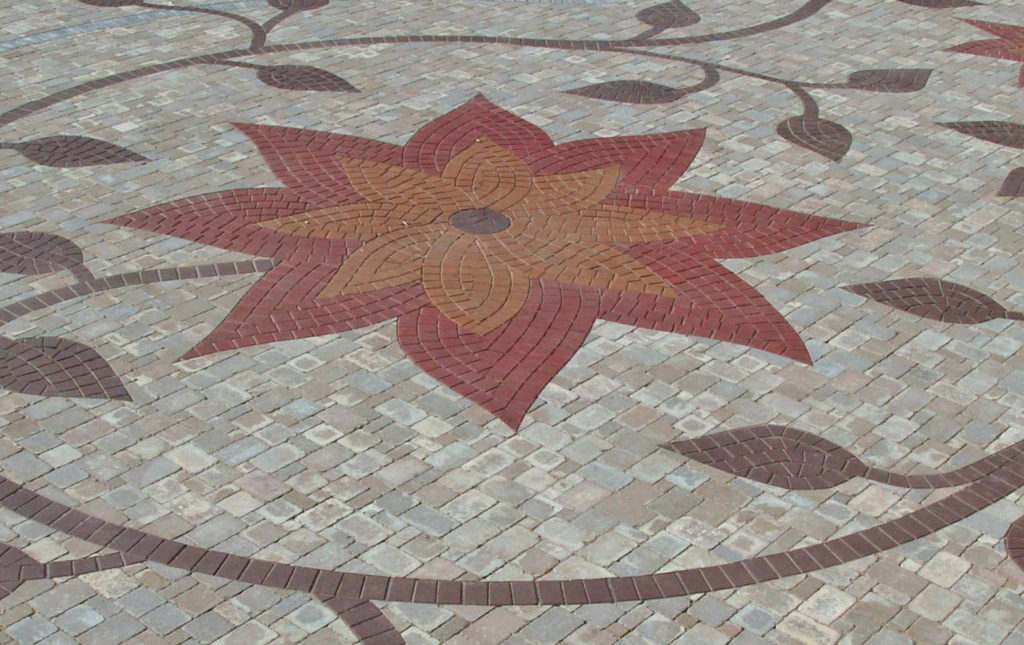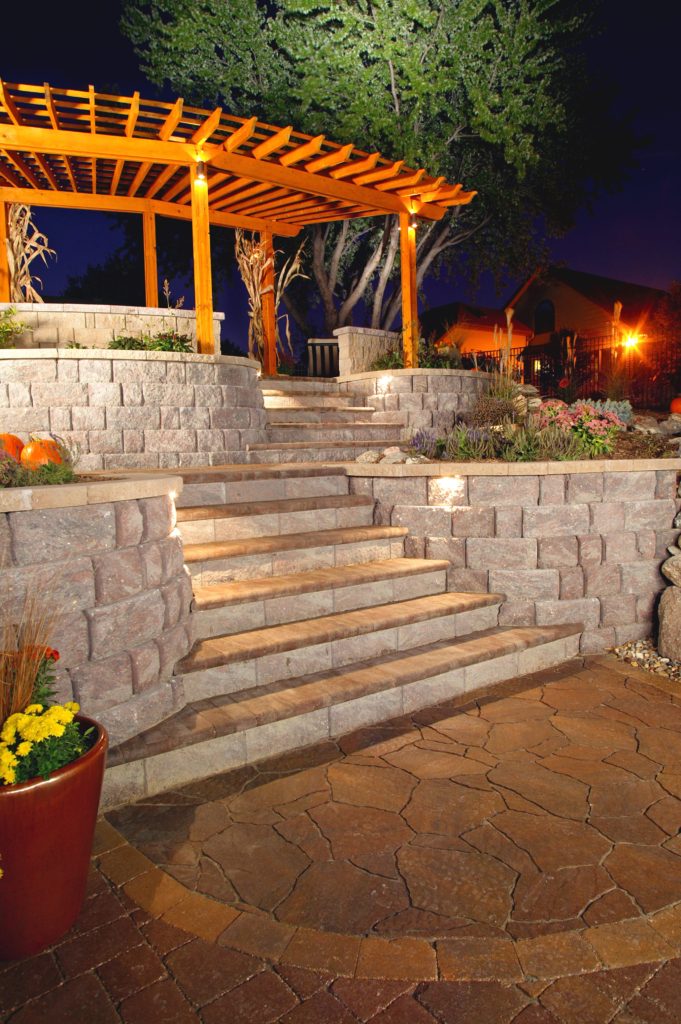Masonry Gets A Touch Of Spring Cleaning Fever
Words: Nick Vaccaro
Sponsored By:

Words: Nick Vaccaro
Photos: PROSOCO
With a blink of the eye, spring pushes the colder temperatures out and invites fresh air and outdoor enjoyment back into our lives. For some, the season sparks the cleaning of baseboards and revitalizing gardens. A select group, however, prefers to direct attention toward masonry surfaces. Anything holding dirt or grime gets its comeuppance during this time of year.
According to Jake Boyer, Clean and Protect Group Leader for PROSOCO, the masonry supply of cleaning objects found around the home or business varies. Springtime recognizes no exclusions.
“Anything deemed dirty gets cleaned during the springtime,” said Boyer. “It can range from patios made of pavers or concrete to outdoor living and kitchen spaces. Driveways and garages see cleaning as well as home exteriors consisting of brick, stone, or manufactured stone veneers.”
Stains found on masonry can wreak havoc, both on the surface or object, as well as the eyes cast upon them. A true masonry lover cannot wait to remove unwanted stains and beautify a natural building product. Countless examples should fall subject to springtime cleaning. Grease and oil from barbecue pits often find their way to stone surfaces and should be removed. Salt or efflorescence on patios, driveways, and home exteriors should all receive attention this time of year. Driveways are often met with tire marks while garage floors fall victim to grease spills.
“Biological growth on patios are common stains that resurface after a year or two,” said Boyer.
Boyer recommended taking a basic approach to cleaning masonry. If found to be dirty, take the initiative and clean it. He also recommended protecting the surface after it has been cleaned to reduce or prevent future recurrences.
Brightening and Beautifying
When attempting to revitalize masonry surfaces, the type of stain typically dictates the type of cleaner needed to effectively complete the task. No matter the cleaner used, Boyer recommended to start the process with the mildest dilution and application of the product being used, and then increase to more aggressive formulas as needed.
“If you’re cleaning general dirt and grime that has built up over the previous year or years, then you can likely get away with a very mild, but effective, all-purpose cleaner such as Klean ‘N Release,” said Boyer. “If you have more specific stains like oil and grease you may use [a] cleaner/degreaser and possibly [an] oil and grease stain remover.”
When attacking efflorescence and deeply entrenched dirt and grime, Boyer suggested starting with Light-Duty Concrete Cleaner. ReVeal combats more severe stains that have gone unattended for an extended period. Boyer revealed his approach for biological staining is to start with Enviro Klean 2010 or ReVive, which can be stepped up to ReKlaim for more severe staining as needed.
“If you don’t know what the stain is, or what products to use, reach out to a professional like PROSOCO’s customer care group or a local representative,” said Boyer. “They can help diagnose and prescribe a treatment most appropriate for your conditions.”

Spot cleaning reigns as a popular method during spring-cleaning activities. Driveways, sidewalks, and other hard concrete surfaces are often met with oil spots, grease dribbles, and other spills of chemicals. Selecting the correct product can optimize cleaning and result in beautification.
“Cleaner/Degreaser is great for cleaning stains,” said Boyer. “If the stains go beyond the surface or have been there for an extended time frame, you may have better luck with a product like Oil & Grease Stain Remover.”
As with anything cleaning application, the best results are rendered when the correct tool is used for the application. The same can be said for masonry cleaning and product selection. The best results can be achieved by using the correct application with the corresponding chemical cleaner.
Common Mistakes
Having developed into a society of instant gratification, cleaning masonry surfaces can test one’s patience. With the combination of the correct chemical or cleaner paired with old-fashioned hard work, desired results can be achieved, but the timeframe might be longer than desired. A common thought process in speeding the results up includes intensifying the cleaning solution, but this can elicit damage.
“People often subscribe to the approach that mild is good but stronger is better,” said Boyer and indicated that this might produce an unwanted outcome.
According to Boyer, people often review product data sheets that suggest specific dilution ratios, such as 1:4 or 1:8. His experience has led him to believe that many people start with a stronger ratio to ensure clean results in a period that better meets their expectations.
“I have seen manufactured stone and pavers that have had their intended color and surface finish washed entirely off with cleaners that were used too aggressively,” said Boyer. “Add to that the most common mistake I see, which is people using a pressure washer at the highest pressure possible and standing as close as they can to the substrate to blast the stains off.”
Boyer explained that this frequent misapplication removes more than just the stain itself – it can begin to erode the substrate. The results are nonreversible in most cases and take what was once a beautiful and expensive building and ruin it.
Another common mishap involves subscribing to the one-size-fits-all mentality. No one cleaner is dedicated to an abundance of surface types.
“While many stains and substrates may be okay to be cleaned with one particular cleaner, it may not be the safest and most effective solution,” said Boyer. “Always take inventory of the stains, substrates, and conditions you have present and get a game plan for the whole project before starting any of it.”
Proactive Measures
Reversing the effects of stains found on masonry surfaces can be tedious, as well as tiresome. In attempting to remove a stain, one might give thought to any processes that might offer protection and prevention. Questioning might be directed at stain proofing a surface or even utilizing waterproofing methods. A preventive search also involves searching out products that can prolong the life span of a freshly cleaned surface.
Boyer weighed in and referred to his diverse experience gained in the field. His answer to these possibilities was an overwhelming yes.
“Absolutely,” said Boyer. “Protecting substrates with proper water and/or stain repellents will keep water and stains like efflorescence from rearing their ugly heads.”

Applying protective treatments provides another service in beautifying appearance. Should a spill occur, removal is made easier, and the stain can likely be avoided. They can additionally provide numerous options for revitalizing color that have been lost over the years. They further improve aesthetic qualities such as gloss and sheen while they also serve as protective measures.
“The big thing you want to be careful of is making sure your products won’t create a continuous film that may trap moisture or water vapor drive,” said Boyer. “These protective treatments can actually cause more issues than they prevent when used incorrectly.”
Putting the Knowledge to Use
Now, outfitted with the proper cleaning regiment, and know what to look for when selecting the appropriate cleaning agent, spring-cleaning crusaders can initiate the process. Developing a plan of stain identification, substrate makeup, and proper chemical use, masonry owners can both effectively and safely clean surfaces with confidence.
Exercising patience and caution can mean the difference between reviving a masonry substrate, and ruining it. Attention should always be directed at product recommendations and starting with the mildest product possible to yield the best results desired overall.